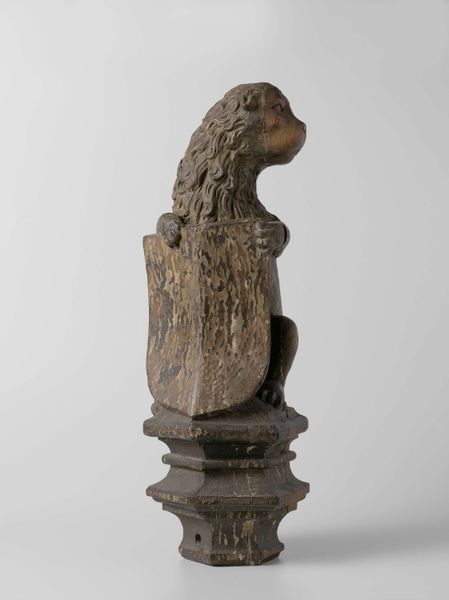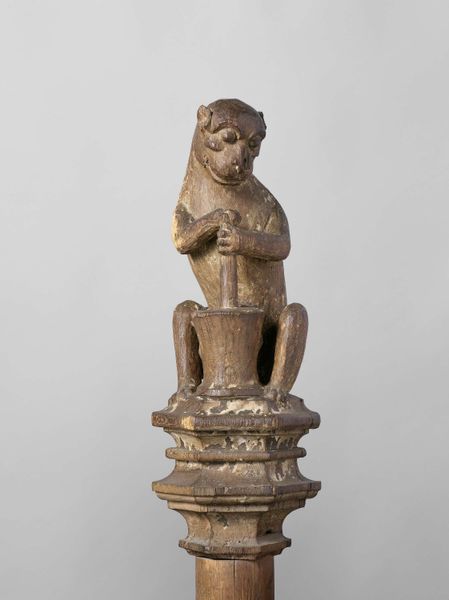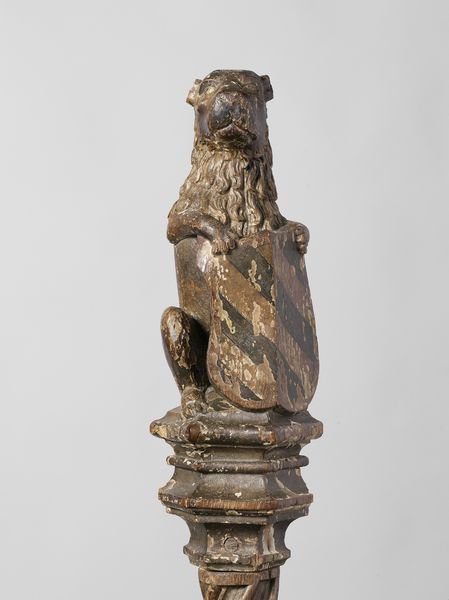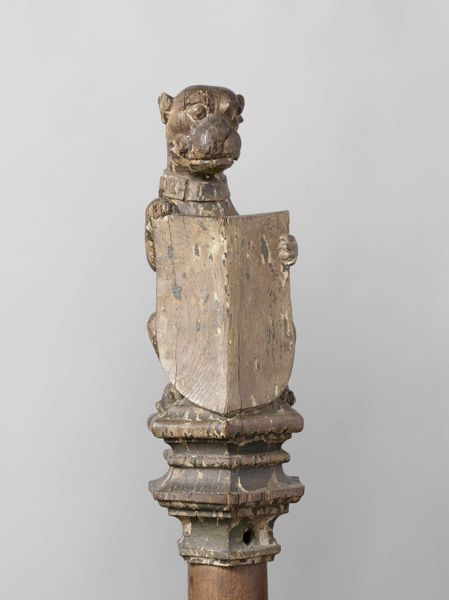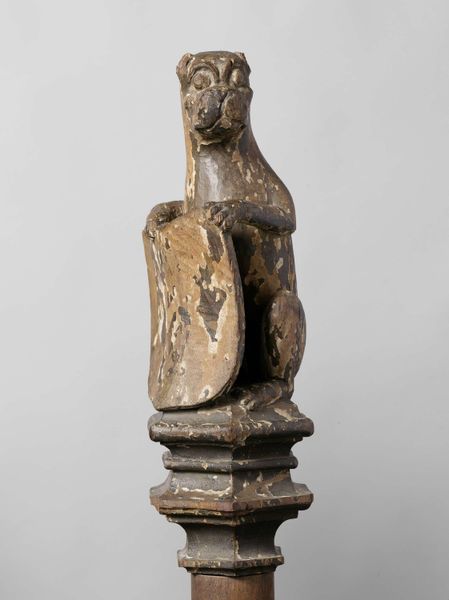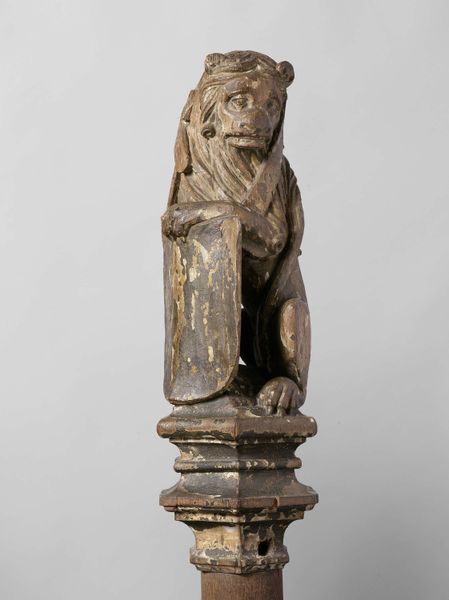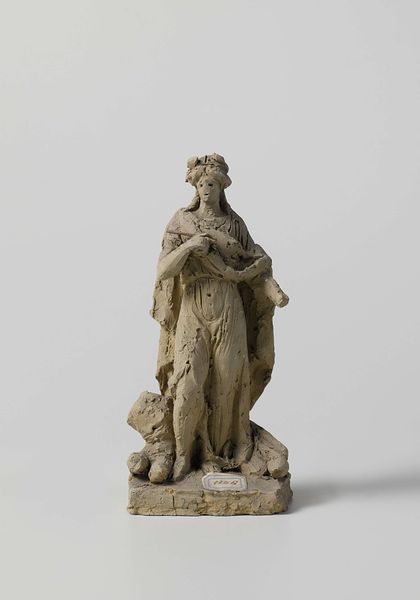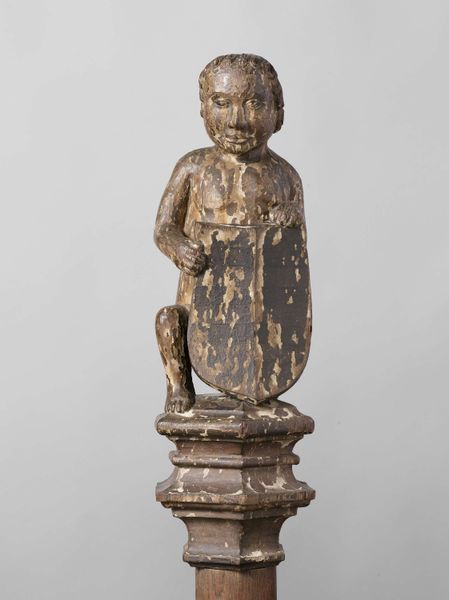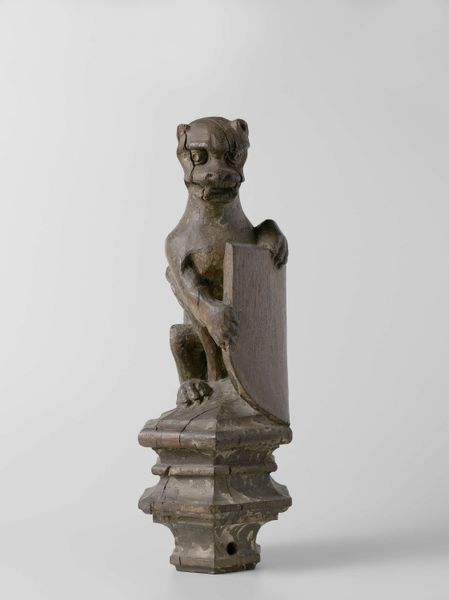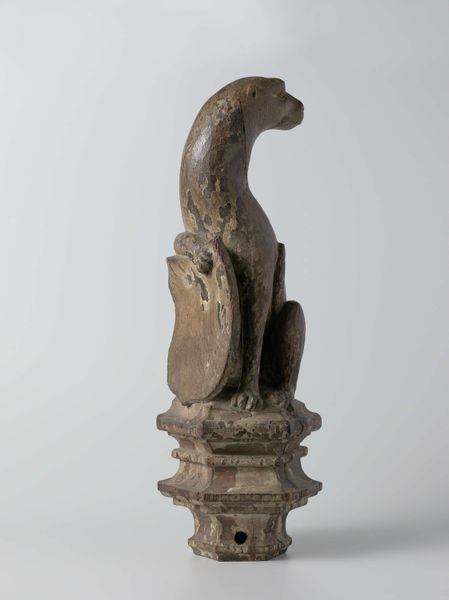
Lion Supporting an Escutcheon, from the Top of a Balustrade or the Backrest of the Stadholder’s Chair in the Rolzaal in the Hof van Holland, The Hague 1511
0:00
0:00
carving, sculpture, wood
#
medieval
#
carving
#
sculpture
#
figuration
#
11_renaissance
#
sculpture
#
wood
Dimensions: height 55.5 cm, width 17 cm, depth 17 cm, weight 27 kg
Copyright: Rijks Museum: Open Domain
This impressive wooden sculpture of a lion supporting an escutcheon was likely made by Joost Janszoon. It would have been carved from a single piece of wood using chisels and gouges, tools familiar to any woodworker of the period. The lion’s stance, the details of its mane, and the escutcheon it holds, all speak to the symbolism of power and heraldry. But it’s the material, wood, and the process of carving that give it a distinct character. The textures created by the carving tools, the weight of the wood itself, and the way it has aged, all contribute to the sculpture's unique presence. The labor involved in producing such a piece shouldn't be overlooked. Carving of this kind requires a high degree of skill and patience, reflecting a long tradition of craftsmanship that elevates the material to a powerful form. The transformation from raw material to symbolic object is a testament to the value of skilled work.
Comments
No comments
Be the first to comment and join the conversation on the ultimate creative platform.
